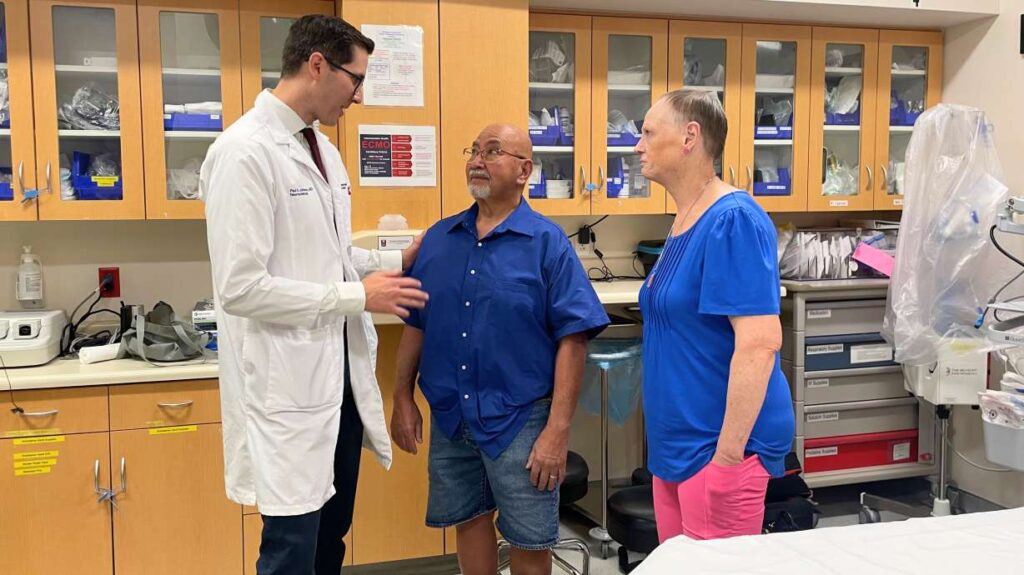
MURRAY — The sound of a fall in the bathroom at 2 a.m. was the first sign for Ann Itchon that something was wrong with her husband, Ted. On January 23, 2024, Ted Itchon experienced a stroke, but thanks to Utah’s rapid response system, he received life-saving treatment in record time.
Immediate Impact
Ann Itchon quickly called 911 after finding Ted on the floor. By the time she reached the hospital, first responders had already administered a stroke-stopping medication. This swift action was crucial in preventing further brain damage.
Key Details Emerge
Dr. Paul Johnson, medical director of the Comprehensive Stroke Program at Intermountain Medical Center, emphasized the urgency in treating strokes. “A stroke is a very time-sensitive disease,” Johnson explained. “Every minute you delay care costs brain cells. The sooner someone arrives at the hospital, the sooner we can intervene.”
“Time is brain.” — Dr. Paul Johnson
By the Numbers
Utah has been recognized as the top state for stroke treatment speed by the American Heart Association. In Utah, 87.1% of stroke patients received critical medication within 45 minutes of hospital arrival, surpassing the national goal.
- 94.5% of patients at Intermountain Health receive medication within 45 minutes.
- 88% receive it in 30 minutes or less.
Industry Response
Intermountain Health has made significant changes to improve treatment times, such as pre-mixing medications, expediting CT scans, and enhancing emergency room workflows. A stroke neurologist is available 24/7 to ensure rapid diagnosis and treatment.
Expert Analysis
“We’ve focused intensely on assessing patients quickly,” said Dr. Johnson. Collaboration with EMS crews and ER staff has been crucial in reducing treatment times. “When a patient like Ted comes in, we are able to get the data we need swiftly,” he added.
Background Context
A stroke occurs when a blood clot blocks an artery, cutting off blood flow and oxygen to the brain, leading to cell death. Strokes are the fifth-leading cause of death in the U.S., often affecting older adults with high blood pressure, cholesterol, or diabetes.
BEFAST mnemonic for stroke symptoms: Balance, Eyes, Face, Arms, Speech, Time to call 911.
Regional Implications
Utah’s success in stroke treatment is attributed to a state-wide focus on rapid assessment and intervention. This proactive approach has set a benchmark for other states to follow.
What Comes Next
Dr. Johnson advises that prevention is key, with 80% of strokes being preventable through managing risk factors like hypertension and diabetes. For those who suffer a stroke, knowing their medical history and medications can expedite treatment.
Ted Itchon returned home just four days after his stroke, requiring only outpatient therapy. His story underscores the importance of rapid medical intervention and serves as a testament to Utah’s leading stroke treatment protocols.
For more information on stroke risk or recovery, visit the American Heart Association’s stroke website.






